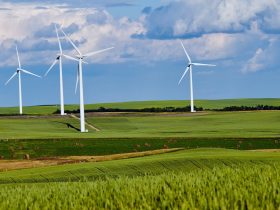In the world of ethical spending, where every dollar you spend is a vote for the world you want to live in, the concept of green financing is gaining a remarkable spotlight. As we dive into the crux of this financial phenomenon, let’s uncover the true colors of sustainability and how it’s reshaping our financial landscape. Strap in as we embark on a journey to understand the potent and profound impact of green financing, the unsung hero of a greener tomorrow.
The Green Financing Revolution: A Brief Insight

In the not-so-distant past, the financial sector seemed to be devoid of any substantial connection with environmental concerns. But the tides have turned, and the shift toward sustainability is rewriting the rules. Green financing, a term that seemed like a buzzword a decade ago, has evolved into a powerhouse, propelling sustainable initiatives forward.
From renewable energy projects to eco-friendly infrastructure developments, green financing is the linchpin holding the sustainable development paradigm together. But how exactly does this financial wizardry work its magic on the ground? Let’s delve deeper into the core components and evaluate their impact through the lens of real-life examples.
Understanding the Mechanism: How Green Financing Works
Imagine a world where your investment in solar panels for your home, or in a community wind farm project, not only reduces your energy bills but also contributes to a cleaner, greener planet. That’s the essence of green financing — leveraging financial resources to drive environmentally sustainable projects and initiatives. This form of financing encompasses a spectrum of instruments, from green bonds to sustainable loans, designed to support projects with substantial environmental benefits.
To grasp its impact, consider the story of the small coastal town of Rockport, Maine. This charming community, powered by the spirit of its residents, initiated a local green financing program to revamp its aging infrastructure. With the issuance of municipal green bonds, the town successfully transformed its outdated water treatment system into an eco-friendly, state-of-the-art facility. This not only improved the quality of life for its residents but also reduced the town’s carbon footprint, setting an inspiring example for communities worldwide.
Unveiling the Tangible Impact: Environmental, Social, and Economic Gains

It’s not just about planting trees or installing solar panels; the impact of green financing ripples across multiple dimensions, creating a harmonious synergy between the environment, society, and the economy. From mitigating climate change to fostering inclusive growth, the implications are profound and far-reaching.
Consider the case of a multinational corporation dedicated to sustainable forestry practices. By securing a green loan, this company not only expanded its reforestation efforts but also empowered local communities by providing sustainable employment opportunities. As a result, the project not only enhanced biodiversity but also boosted the economic resilience of the region, proving that sustainability and profitability can indeed go hand in hand.
Moreover, the integration of sustainable practices into mainstream financial systems has given rise to a paradigm shift, where companies are compelled to prioritize environmental and social responsibilities alongside financial gains. This shift is encapsulated by the rise of ESG (Environmental, Social, and Governance) criteria, which has now become a crucial yardstick for investors and businesses alike.
Challenges and Opportunities on the Horizon
Despite the promising prospects of green financing, it’s essential to acknowledge the challenges it faces. From the intricacies of measuring environmental impact to ensuring the integrity of green projects, there’s still a long way to go. However, these challenges present an opportunity for innovation and collaboration.
The emergence of technology-driven solutions, such as blockchain-based transparency in green bonds or impact measurement tools leveraging big data analytics, is ushering in a new era of accountability and efficiency. Simultaneously, collaborative efforts between governments, financial institutions, and grassroots organizations are fostering a conducive environment for sustainable finance to thrive.
Charting the Path Ahead: A Call to Action for a Greener Future
As we reflect on the transformative power of green financing, it becomes evident that the choices we make today will shape the world of tomorrow. Each investment, each financial decision, has the potential to steer our collective journey toward a more sustainable and equitable future.
So, what can we do as individuals? It’s not just about big investments or multimillion-dollar projects. Simple choices like opting for a green mortgage or supporting local green businesses can make a substantial difference. Educating ourselves about sustainable finance, demanding transparency from financial institutions, and advocating for policy changes that promote sustainable practices are critical steps toward building a more resilient and environmentally conscious world.
In the words of renowned environmentalist Jane Goodall, “You cannot get through a single day without having an impact on the world around you. What you do makes a difference, and you have to decide what kind of difference you want to make.”

































